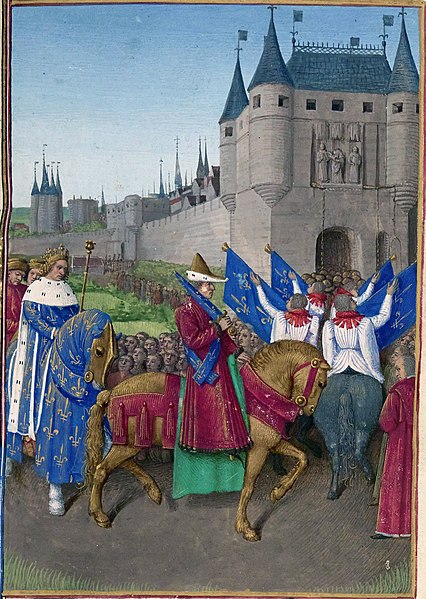A Joyous Entry is the official name used for the ceremonial royal entry, the first official peaceable visit of a reigning monarch, prince, duke or governor into a city, mainly in the Duchy of Brabant or the County of Flanders and occasionally in France, Luxembourg, Hungary, or Scotland, usually coinciding with recognition by the monarch of the rights or privileges to the city and sometimes accompanied by an extension of them.
Ferdinand Receives the Keys of the City from the Virgin of Ghent, print after a painting made by Antoon van den Heuvel for the Joyous Entry by the Cardinal-Infante Ferdinand into Ghent in 1635
The Joyous Entry of John of Austria into Brussels, 1 May 1577. Print from 'The Wars of Nassau' by W. Baudartius, Amsterdam 1616.
Joyous Entry into Brussels of Archduchess Maria Elisabeth on 9 October 1725 by Andreas Martin
The ceremonies and festivities accompanying a formal entry by a ruler or his/her representative into a city in the Middle Ages and early modern period in Europe were known as the royal entry, triumphal entry, or Joyous Entry. The entry centred on a procession carrying the entering ruler into the city, where they were greeted and paid appropriate homage by the civic authorities, followed by a feast and other celebrations.
Entry of John II of France and Joan I of Auvergne into Paris after their coronation at Reims in 1350, later manuscript illumination by Jean Fouquet
King Francis I of France, Charles V, and Cardinal Alessandro Farnese enter Paris under a canopy of estate in 1540, in a fresco by Taddeo Zuccari.
Charles V of France enters Paris after his coronation at Rheims in 1364. Later depiction by Jean Fouquet.
Later woodcut after Mantegna, with hand-colouring, showing the culmination of the Triumphs of Caesar.







